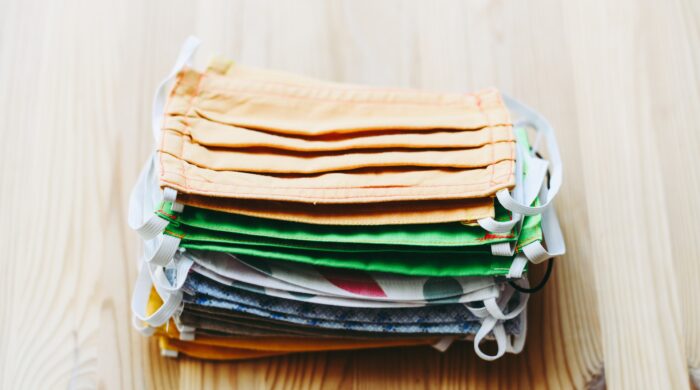In our ever-changing world, it can be challenging to keep up with all of the recommended guidelines to prevent the spread of COVID-19. One of the most important and easiest ways to stay safe is to wear a mask. Washingtonians are now required by the Secretary of Health to wear a mask or cloth face covering in public and shared spaces, both indoors and outdoors. Many workers also must mask-up in their daily jobs.
In this post we’ll explain why it’s so vital to wear a mask for public health; explore the correct way to fit and wear a mask; share how to properly clean your face coverings and provide a step-by-step way to make your own mask from common items. These recommendations all come from the Center for Disease Control and Prevention (CDC) after extensive research about how to keep us all safe.
Why wear a face mask?
Even if you have no symptoms of the coronavirus and aren’t in a high-risk category of people likely to contract it, that doesn’t mean that you aren’t carrying it. Those who are asymptomatic can spread the disease even without experiencing a single symptom through respiratory droplets transmitted through sneezes, coughs and other actions (such as singing) when they exhale. The main reason to wear a mask is to protect others from getting the virus if you are a carrier. The only exceptions to mask wearing include children under the age of 2, people who have a medical condition that makes breathing difficult for them or those who are incapacitated or unconscious.
What is the proper way to wear and use a face mask?
It may seem simple, but many are wearing or using their face coverings in ways that don’t sufficiently protect those around them from droplet sprays. Here are a few things to keep in mind for everyday use of face masks:
- Wash your hands before putting on your face mask.
- Place it over your nose and mouth first, then secure it under your chin.
- Make sure it fits snugly on the sides of your face.
- Confirm you can breathe easily.
Additional things to remember:
- Don’t use any masks that have an exhalation vent—they defeat the purpose of wearing one.
- Don’t use any medical-grade Personal Protective Equipment (PPE), such as an N95 mask, unless you are a medical or other professional who interacts with potentially infected patients in your line of work. Because there are shortages of this type of gear, it’s important we leave the supply strong for those on the front lines who need them most.
Sometimes finding a store-bought mask or covering that fits nicely to your face can be difficult. As an alternative, you can follow this simple tutorial to craft your own and customize the dimensions to your desired size.
How do you properly clean a cloth face mask?
There are a few methods you can use to clean your cloth face covering:
In the washing machine, use traditional detergent and add the mask in with your usual load of laundry. Be sure to use the warmest setting possible for the mask fabric.
By hand, if the fabric allows for it, you can create a solution using 1/3 of a cup of household bleach per gallon of room temperature water or 4 teaspoons per quart of room temperature water. Soak mask for five minutes, then rinse thoroughly with room temperature or cool water. Dry your mask in direct sunlight if possible or a dryer until all moisture is gone.
Just remember: masks should be cleaned thoroughly after each use to maintain optimal health and safety, so it’s good to have a supply of several masks on hand to rotate throughout the week.
Learn More
For additional information on procedures and steps we’re taking to ensure your safety during visits to the Western Washington Medical Group clinics and facilities as the pandemic continues, read through our Covid Patient document. For more general inquiries, complete the form on this page.
